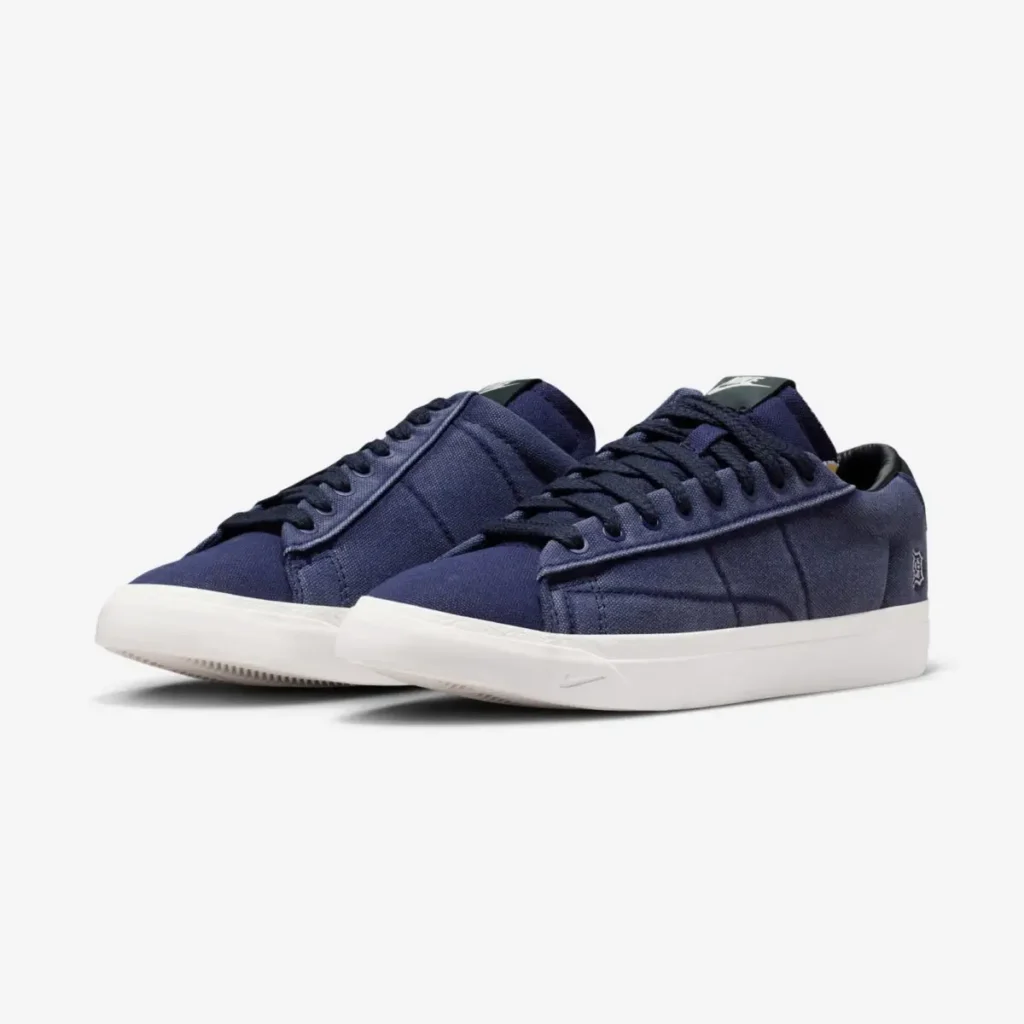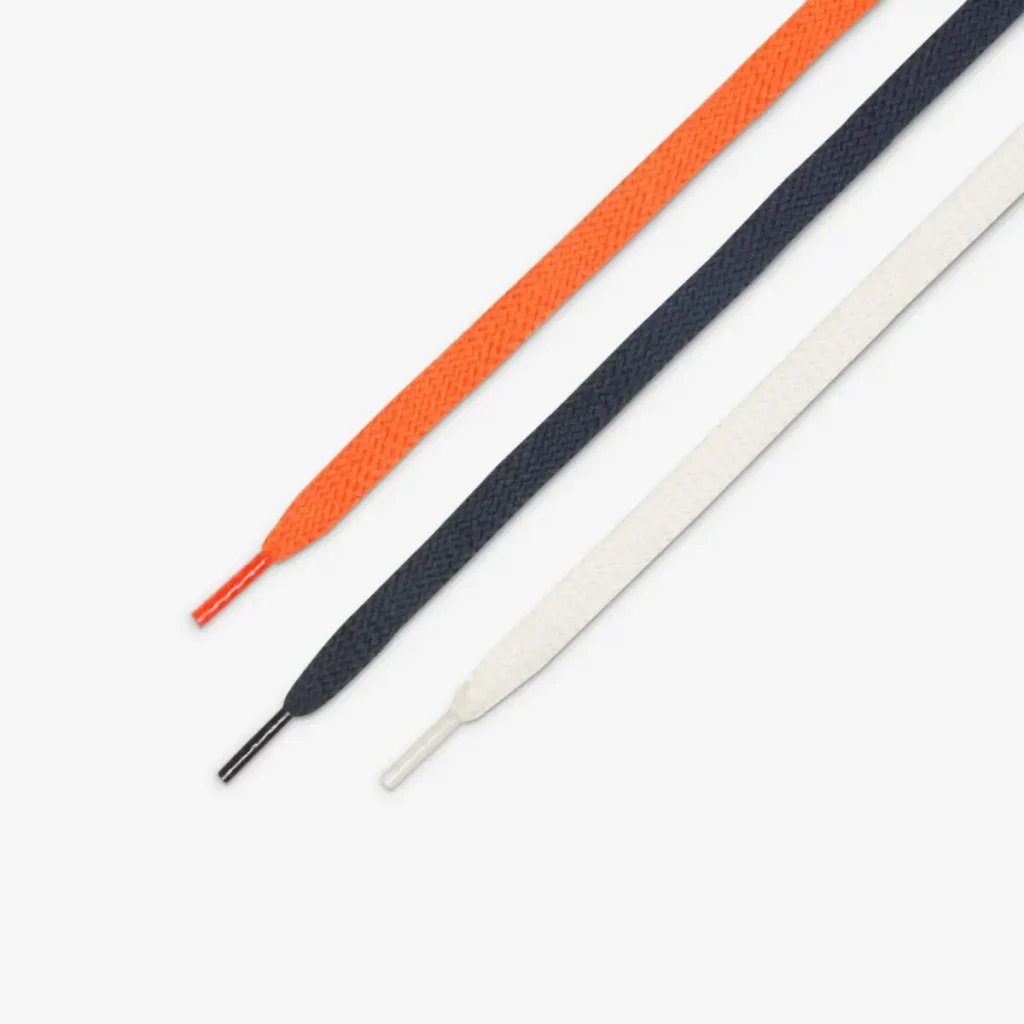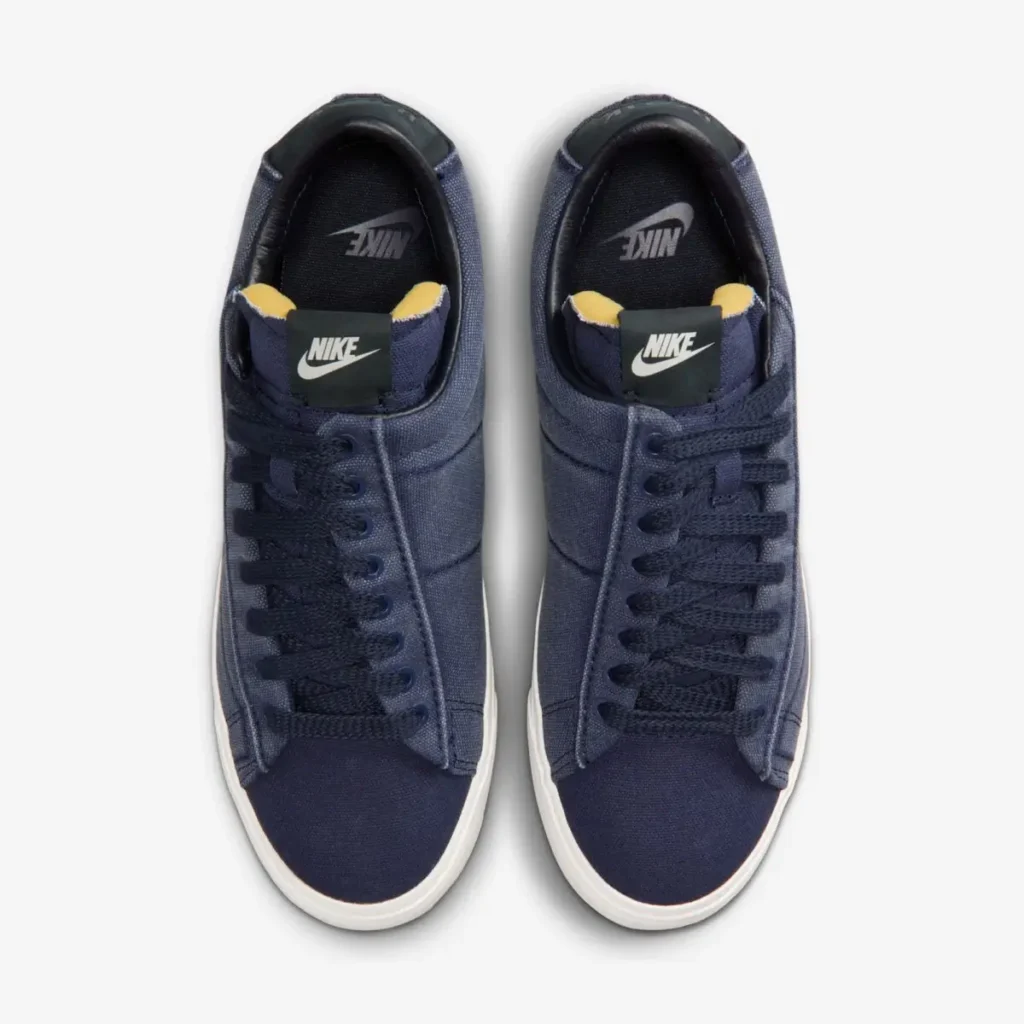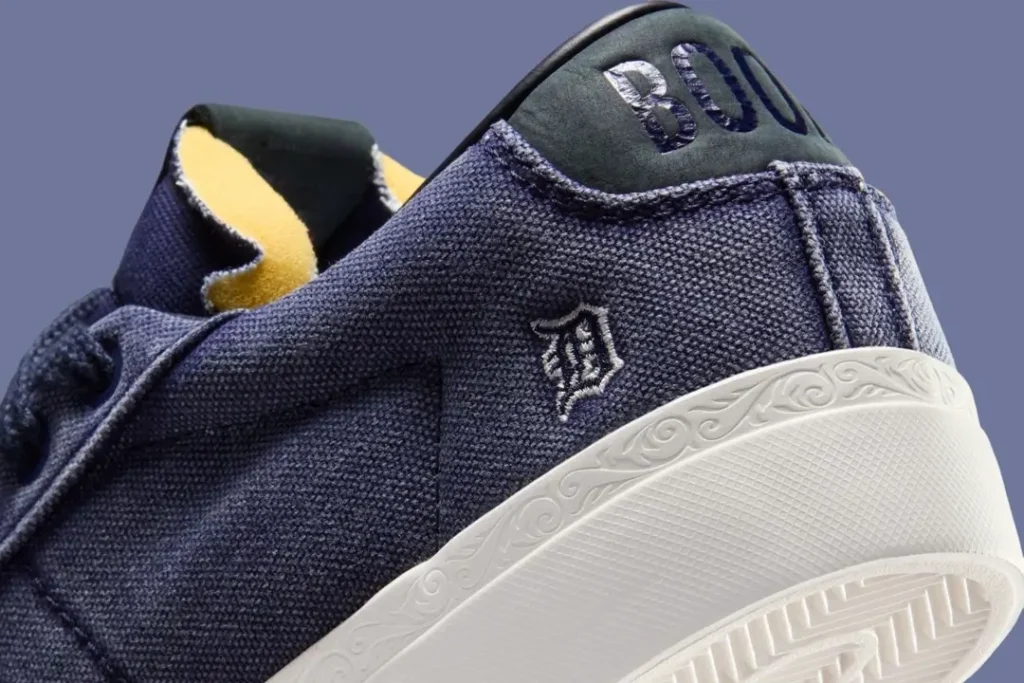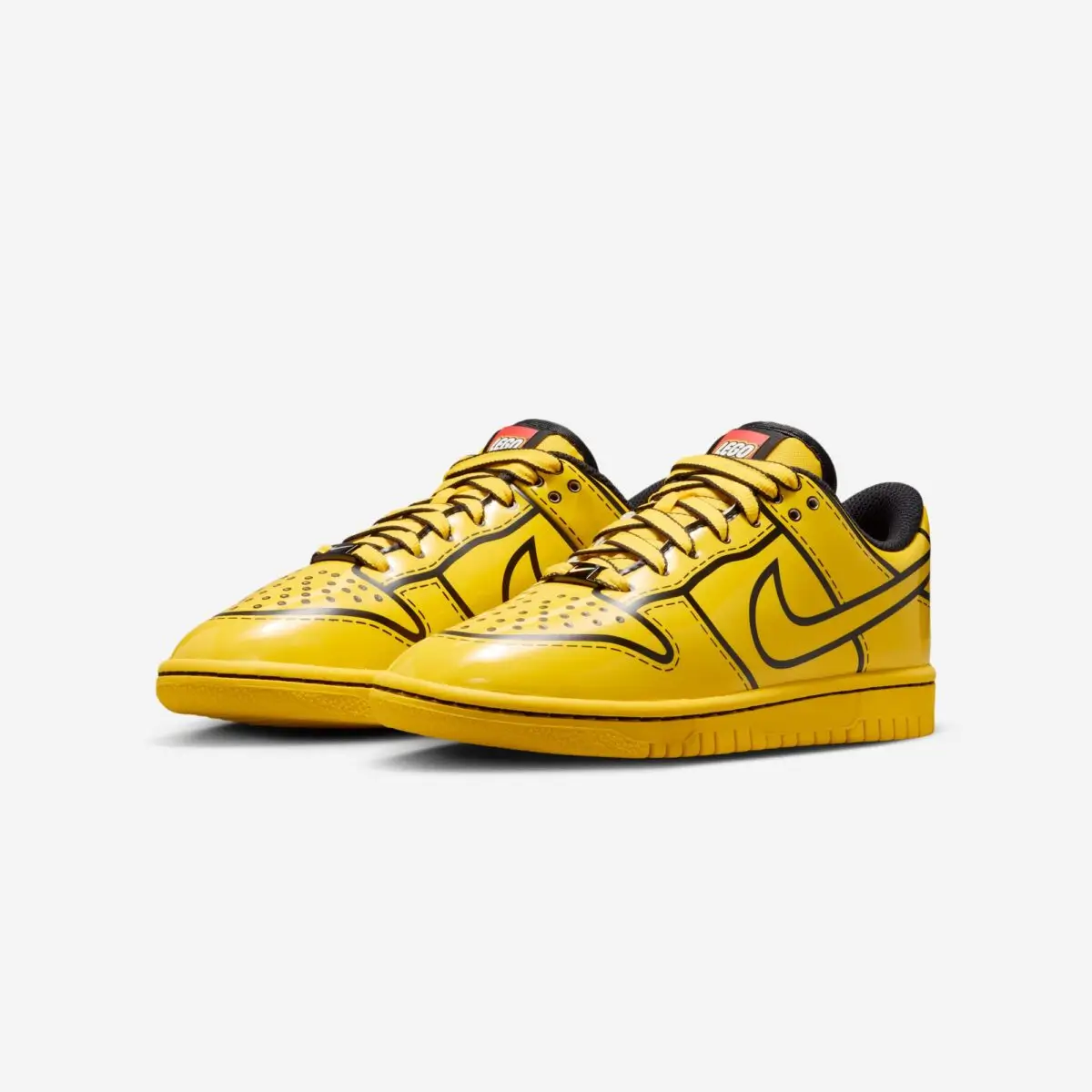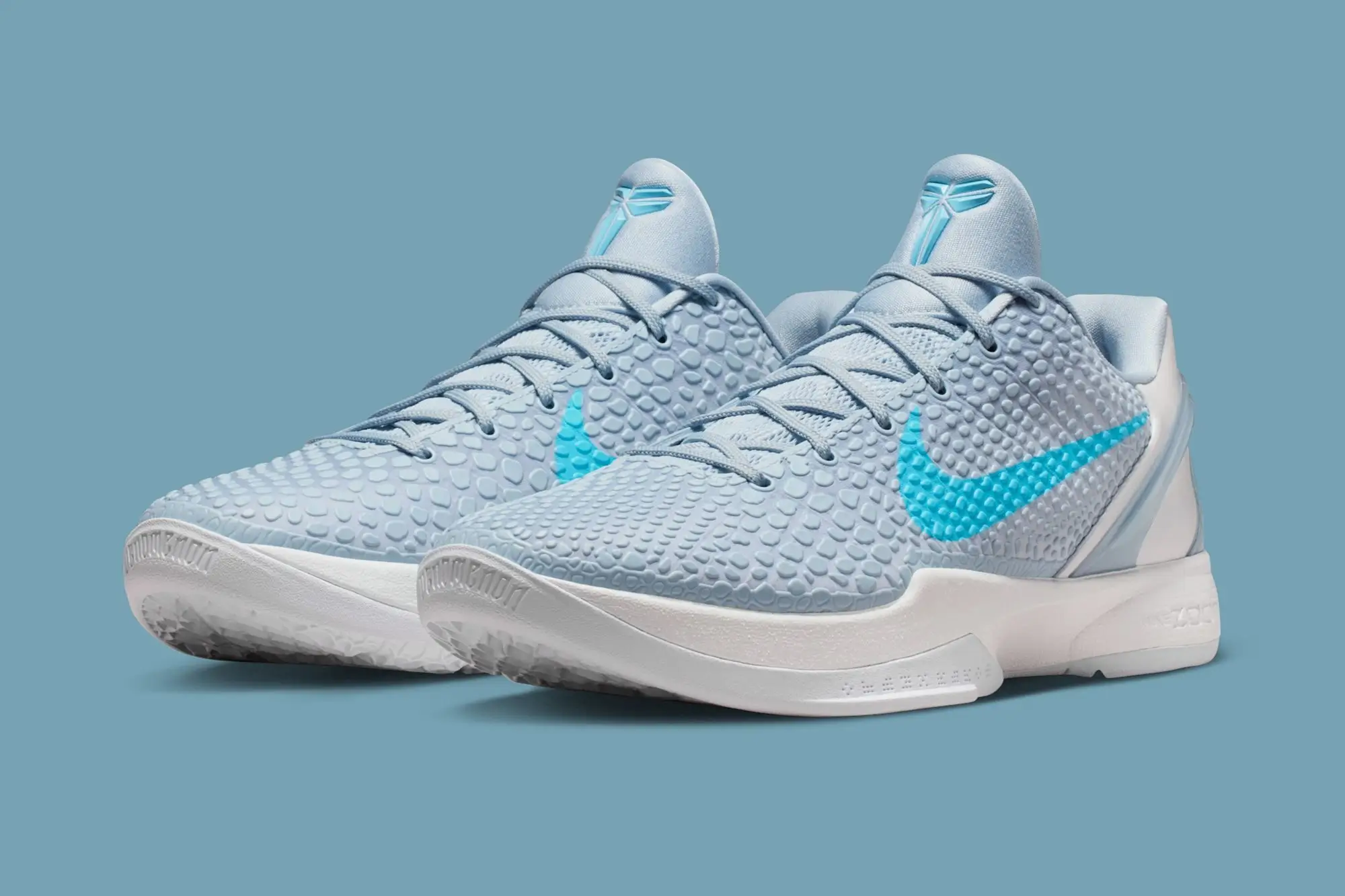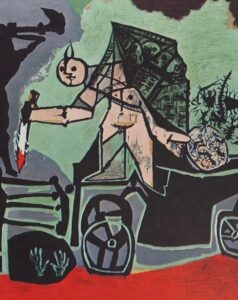quiet
Devin Booker has become one of Nike Basketball’s most intriguing design voices, precisely because he refuses to chase noise. In a sneaker era defined by maximalism — oversized geometries, chaotic palettes, hyper-loud storytelling — Booker’s approach feels almost radical in its restraint. His shoes speak softly but confidently, channeling the same economy of motion that defines his game on the court. This sensibility now flows cleanly into one of his most refined lifestyle offerings: the Nike Blazer Low “College Navy.”
Booker’s partnerships with Nike are rarely about spectacle. They are about clarity. They are about the fundamentals. And the Blazer Low, a silhouette that predates him by decades, becomes the perfect canvas for his stripped-back refinement. It’s a shoe that rewards subtle tweaks rather than sweeping reinvention — a model built on heritage, discipline, and simplicity. Booker doesn’t try to modernize it beyond recognition. Instead, he distills it.
style
The “College Navy” palette is the heart of this collaboration. Deep blue suede takes the lead — a navy that reads more mature than collegiate literal. It doesn’t feel like game-day paraphernalia. It feels like a classic varsity jacket from a pre-digital era, the kind worn soft over years of ownership. This choice of navy communicates intentionality: it is rich, wearable, and resistant to trends.
Against the suede, the white elements land with an understated precision. A tumbled leather Swoosh cuts across the sidewall with quiet authority. The classic Nike heel badge stays unchanged, honoring the Blazer’s archival DNA. Beneath it all, a slightly yellowed midsole injects a vintage patina that makes the shoe look immediately lived-in and authentic.
Booker’s personal style often gravitates toward monochromes, earth tones, and clean silhouettes. The “College Navy” colorway mirrors that preference. On foot, the shoe doesn’t demand attention; it enhances whatever surrounds it. It blends into outfits in the way a great foundational piece should.
material
The tactile narrative of the “College Navy” Blazer Low is as important as the visual one. The suede is short-haired yet lush, giving the upper a soft, matte depth under light. Booker is known to have a strong appreciation for premium craftsmanship — visible in the textured leathers, natural tones, and quality finishing found in his Book 1 signature line — and that sensibility feels present here.
The exposed foam tongue, a hallmark of the Blazer family, remains untouched, emerging in a warm cream shade that leans into lifestyle territory. This small detail reinforces the shoe’s vintage character and pushes it away from sterile modernity. The stitching, panel cuts, and proportions all pay homage to classic Nike craftsmanship rather than cutting-edge experimentation.
It is, in essence, an archival shoe elevated through the smallest, smartest interventions. Nothing here feels accidental. Even the suede’s shade suggests a long life ahead — a color meant to age gracefully with wear.
flow
Booker’s take on the Blazer Low thrives not in the display case but in everyday life. It has the kind of versatility that adapts across styles: raw denim, roomy chinos, tailored trousers, athletic sweats, archival streetwear, even minimalist uniforms. It can disappear into a monochrome fit or quietly uplift a more layered one.
This is Booker’s broader design ethos: sneakers are meant to be part of your life, not ornaments. He wears his shoes. He scuffs them. He pairs them with essentials, not theatrics. The “College Navy” Blazer Low fits seamlessly into that rhythm. It’s not precious. It’s lived-in luxury — the type of shoe that only looks better after weeks, months, and years of real use.
This quality is why the Blazer Low has survived so many cultural cycles. It began as a basketball shoe, transformed into a skate staple, and settled into streetwear as a quiet classic. Booker’s edition honors that lineage. He doesn’t force a new identity onto it; he sharpens the identity it always had.
phil
What distinguishes the “College Navy” collaboration from many athlete-driven projects is the absence of forced personal branding. There are no oversized logos, no autobiographical motifs, no flashy storytelling elements claiming heroic origin. Booker trusts the silhouette. He trusts the materials. And he trusts the audience.
His restraint is the story.
This approach aligns him with a growing class of athletes whose taste speaks louder than their marketing. Booker doesn’t treat sneakers as billboards. He treats them as objects of style. This perspective is refreshing, especially as signature models increasingly drift toward theatricality. Booker’s work re-centers the idea that the most enduring footwear often flows from design minimalism rather than maximalist identity-building.
In Booker’s universe, the wearer completes the sneaker — not the other way around.
show
The Devin Booker x Nike Blazer Low “College Navy” represents more than a clean colorway. It signals Booker’s expanding influence within Nike’s lifestyle and heritage ecosystem. His ability to refine rather than reinvent places him within the lineage of tastemaker athletes who guide sneaker culture through subtlety: the players who elevate basics, who bring back classics, who make restraint aspirational.
This Blazer Low is a reminder that minimalism still moves culture. That a thoughtfully executed colorway can outlast louder, more complicated designs. That heritage silhouettes don’t need reinvention to remain relevant — they need curation.
Booker understands curation. He plays with precision and chooses aesthetics the same way. The “College Navy” Blazer Low is an extension of that creative discipline, a shoe destined for wide rotation, slow aging, and eventual icon status for those who appreciate the beauty of essentials.
In a marketplace dominated by spectacle, this collaboration feels like a breath of calm. It is a sneaker for people who love sneakers — not because they chase noise, but because they chase longevity.
Devin Booker didn’t just refine the Blazer Low. He restored its confidence.
No comments yet.

